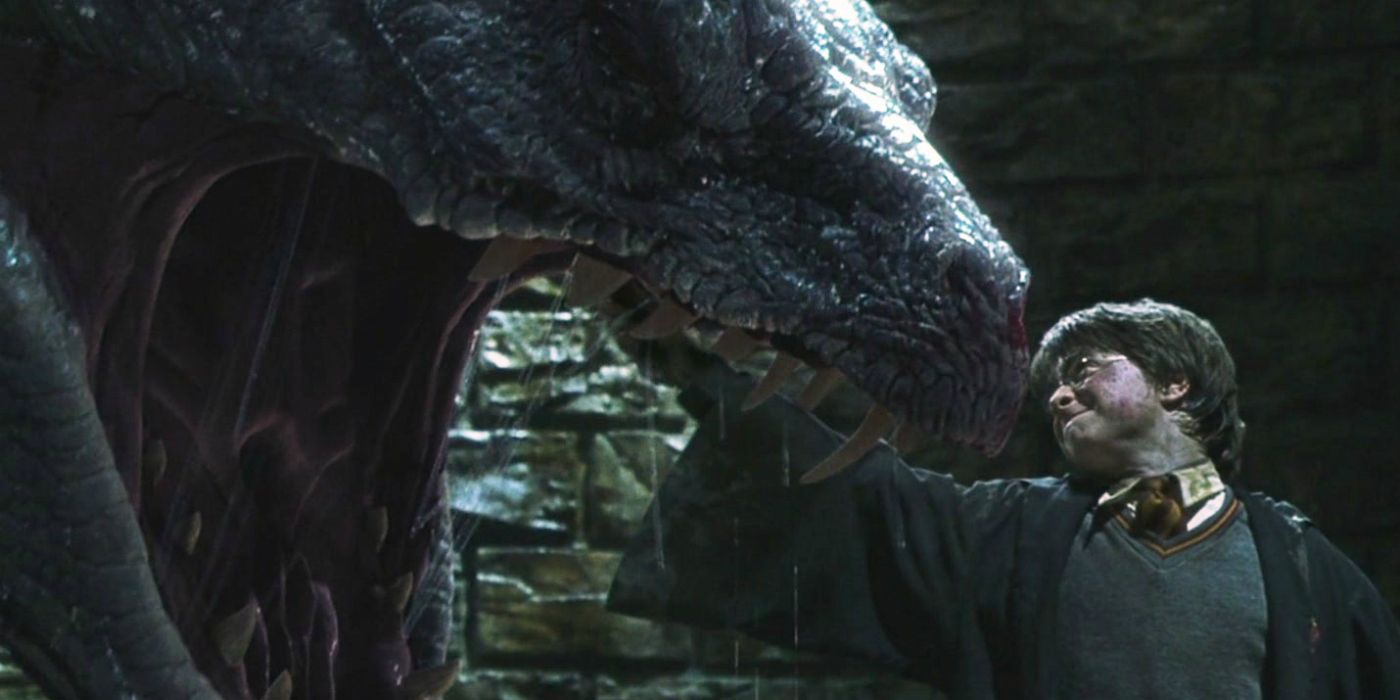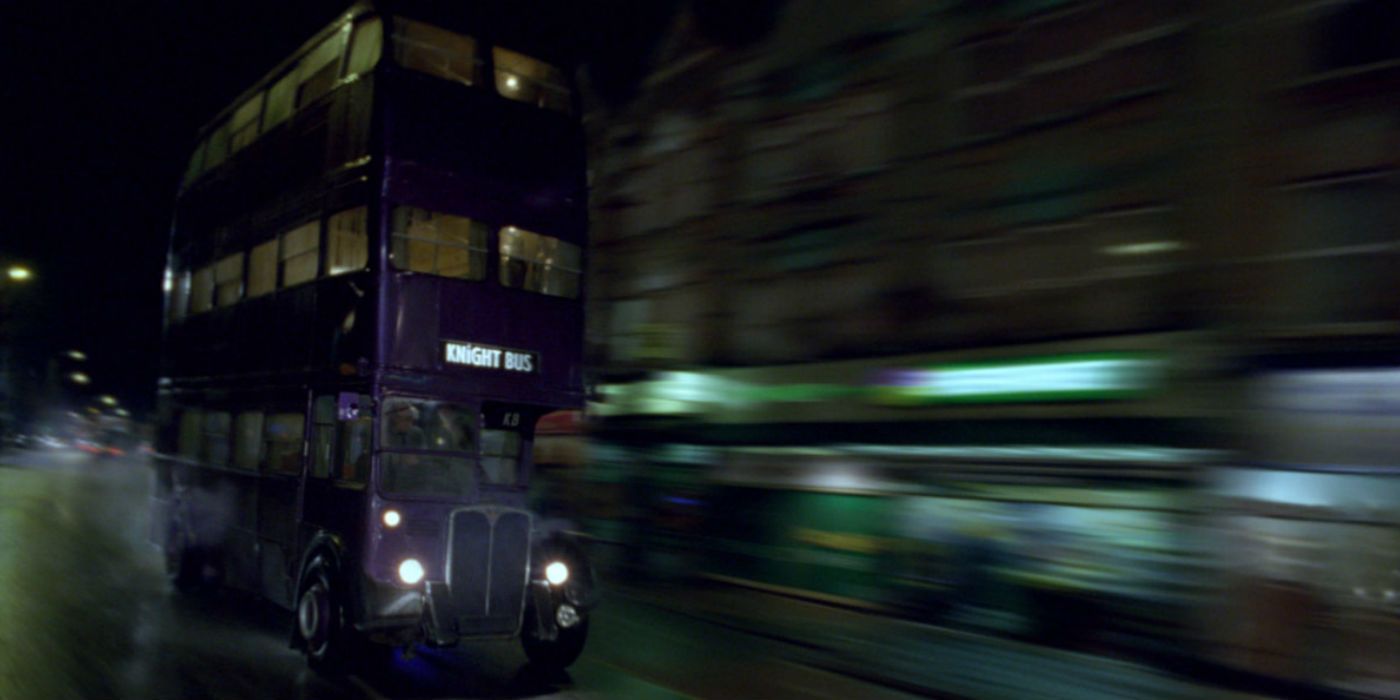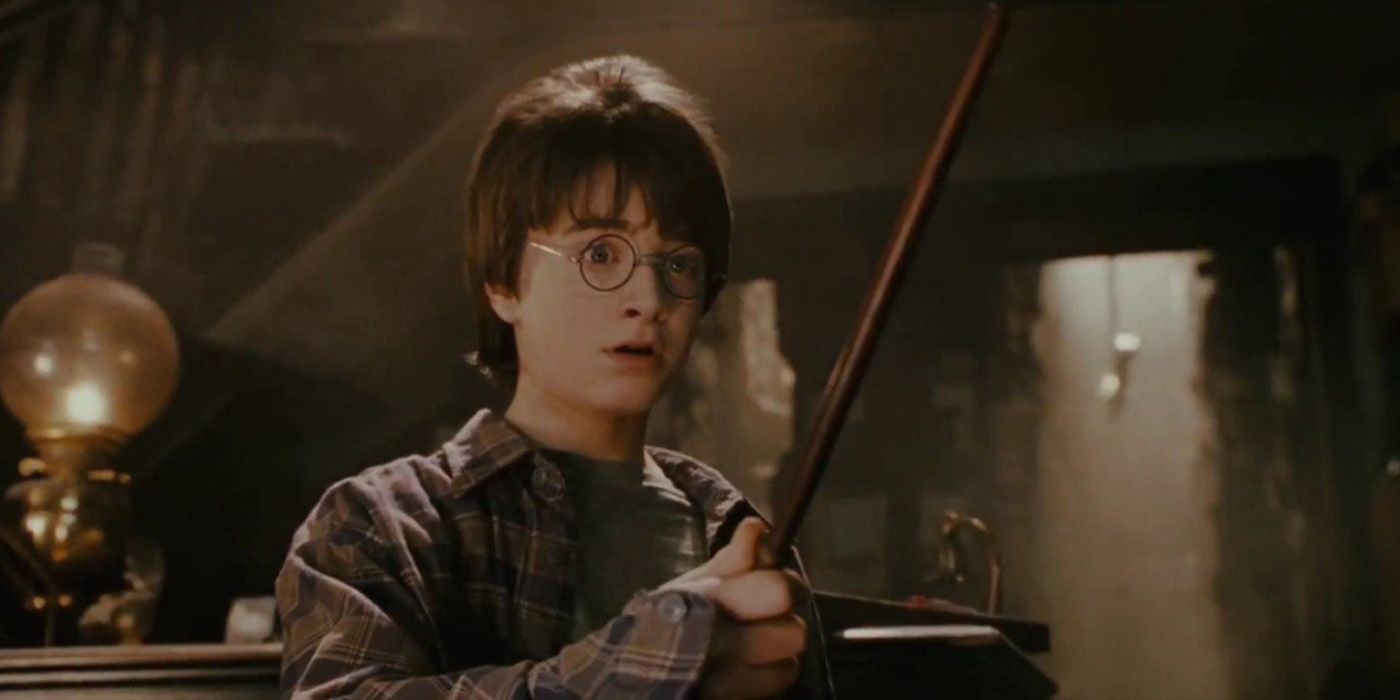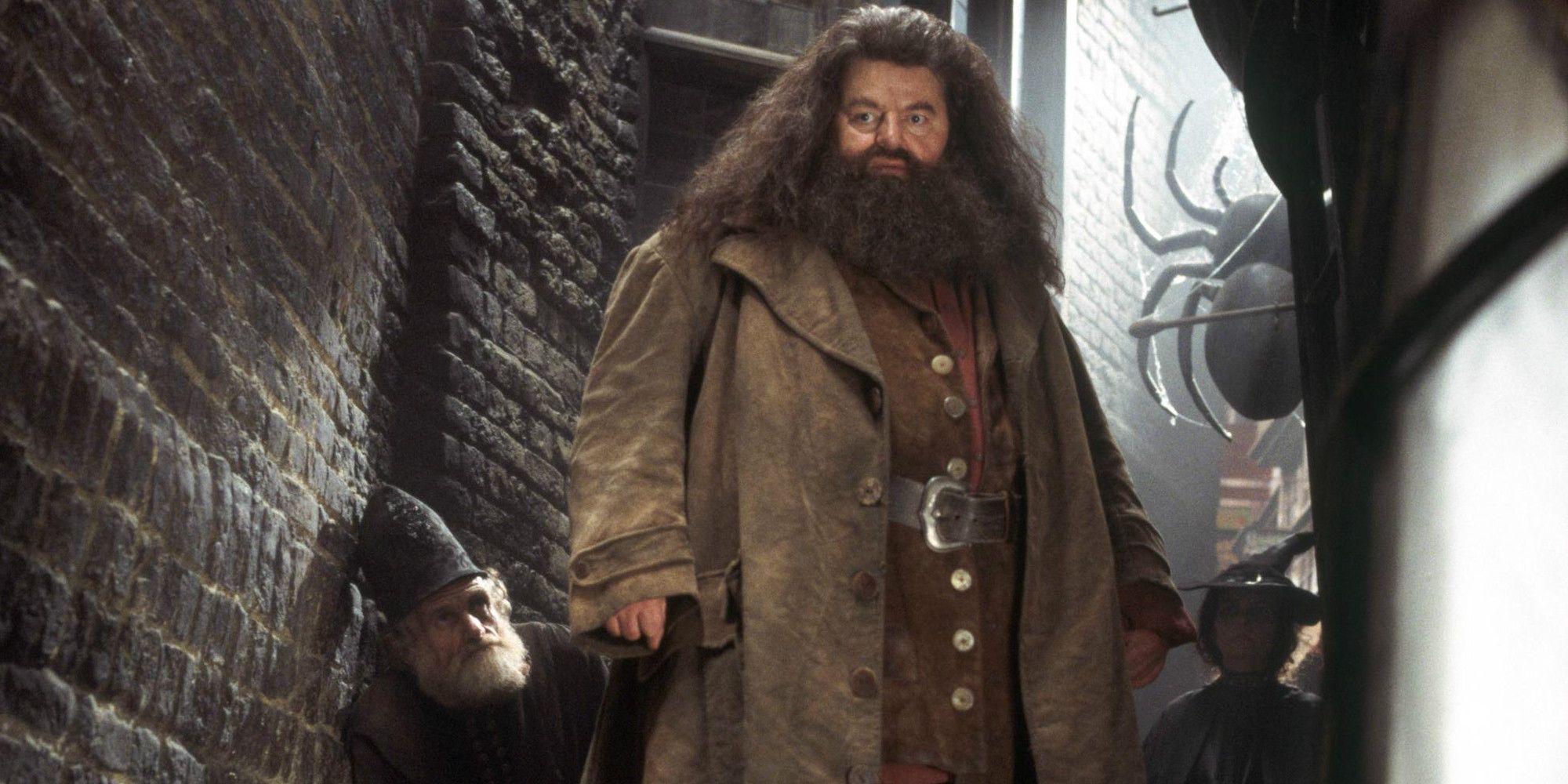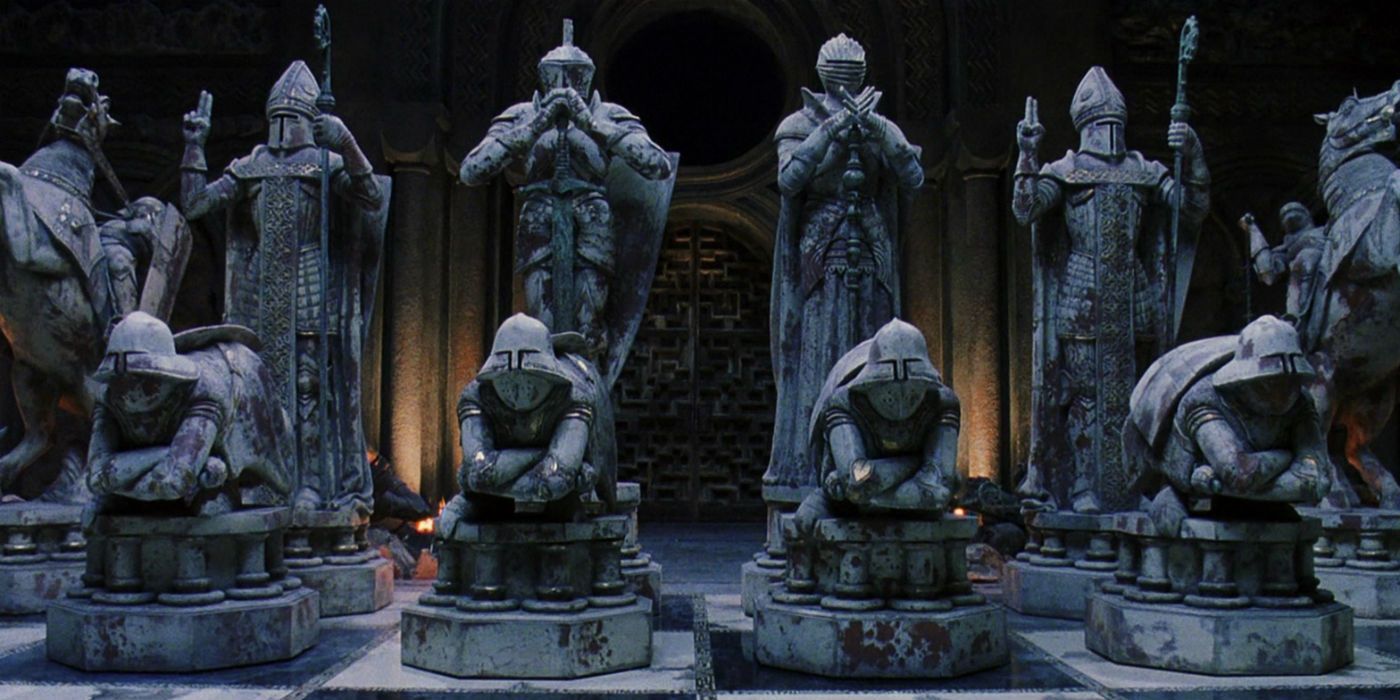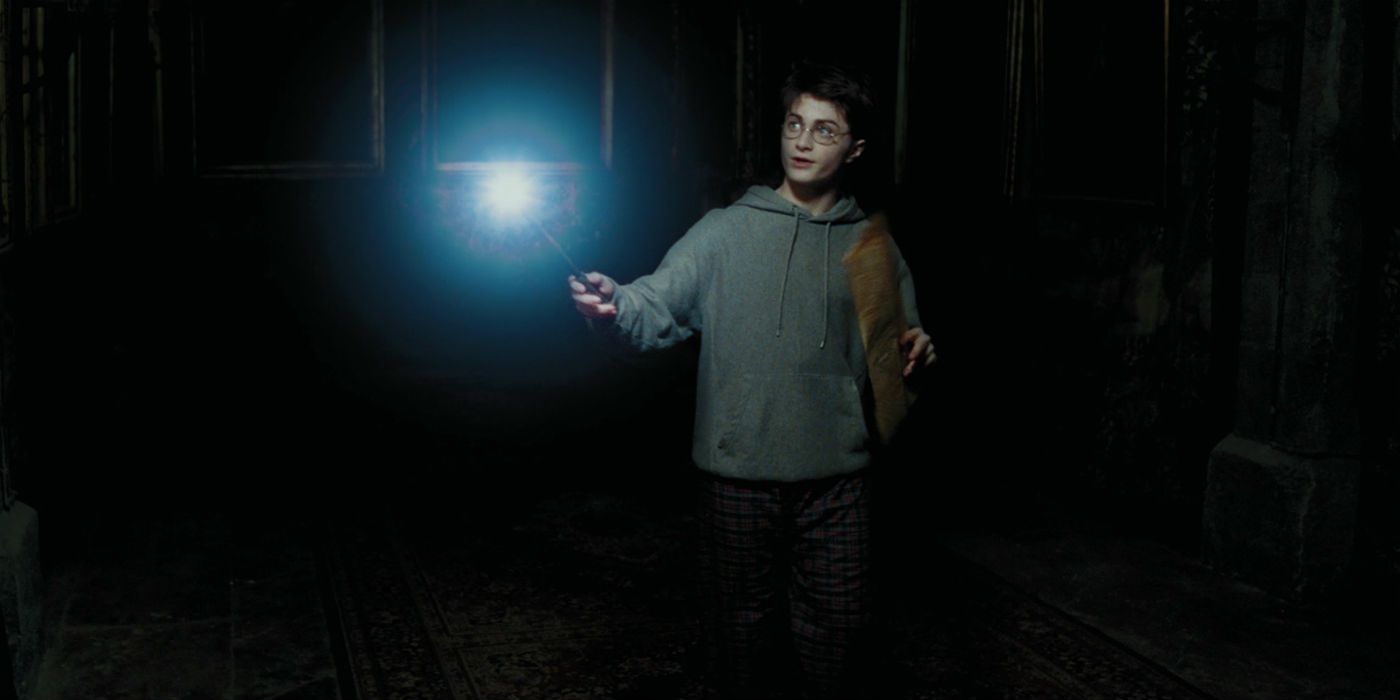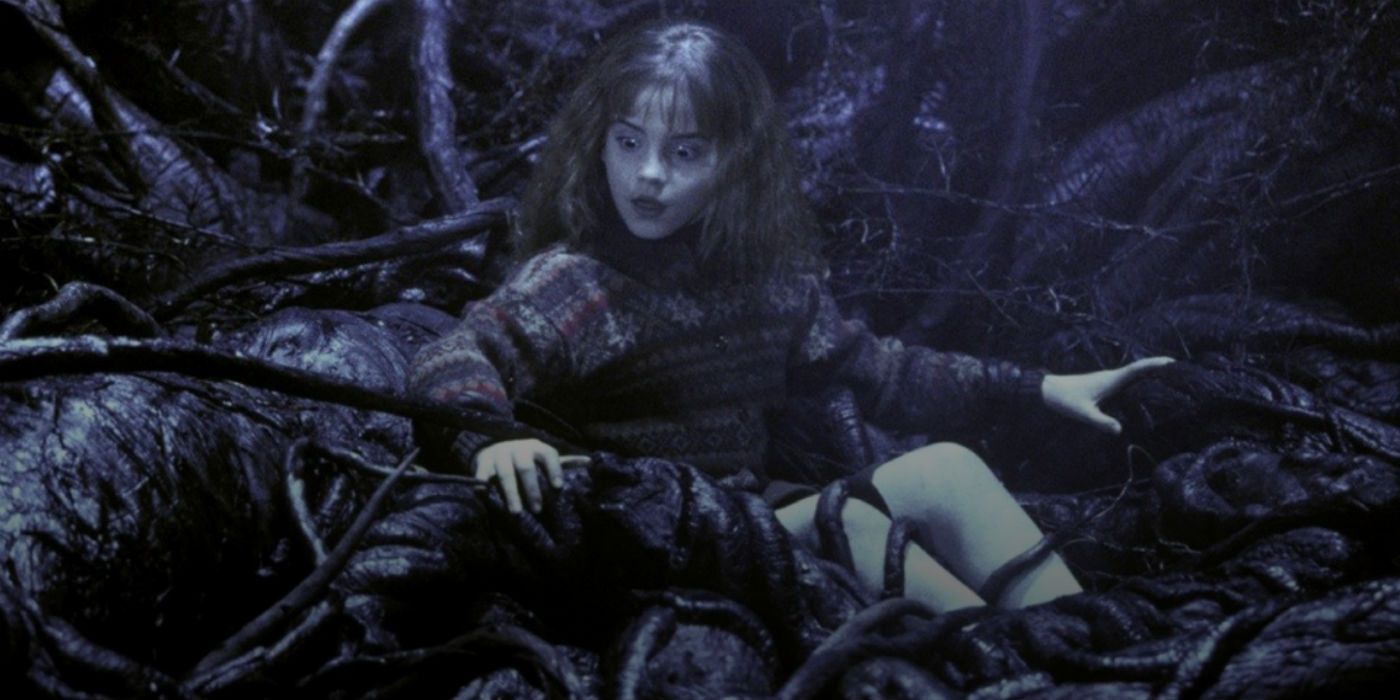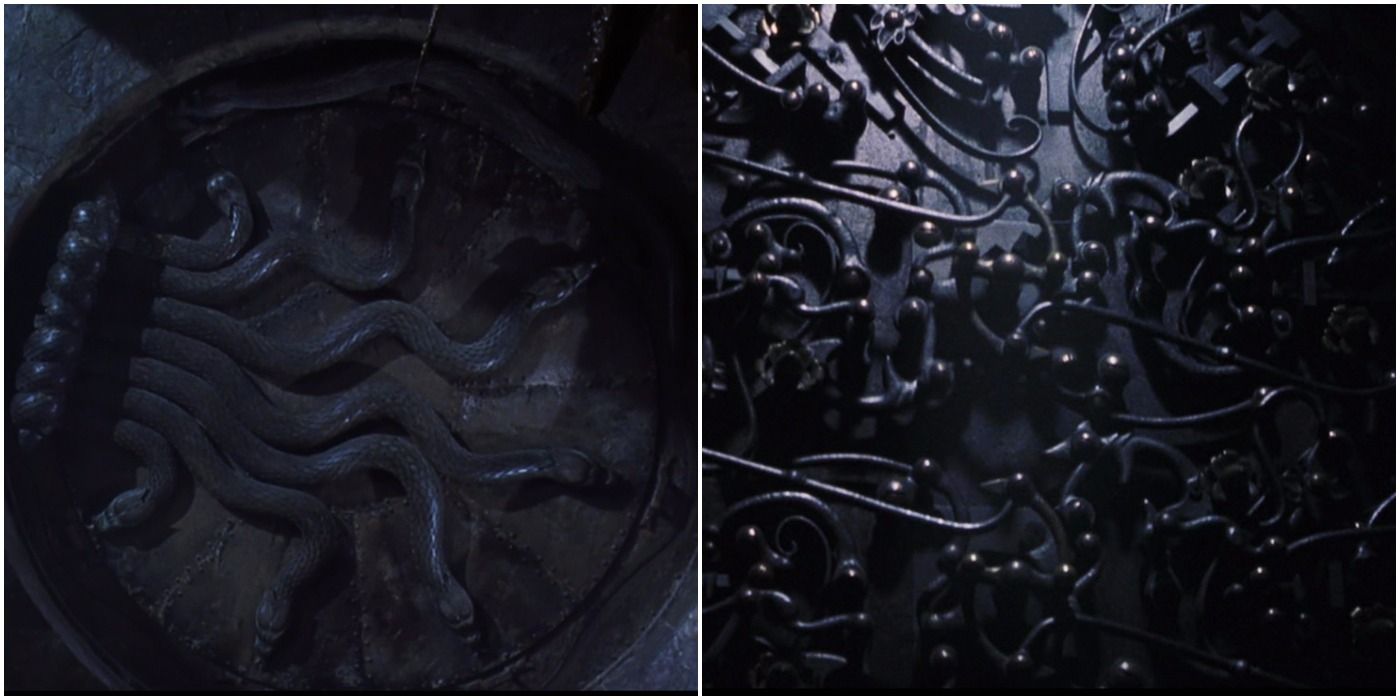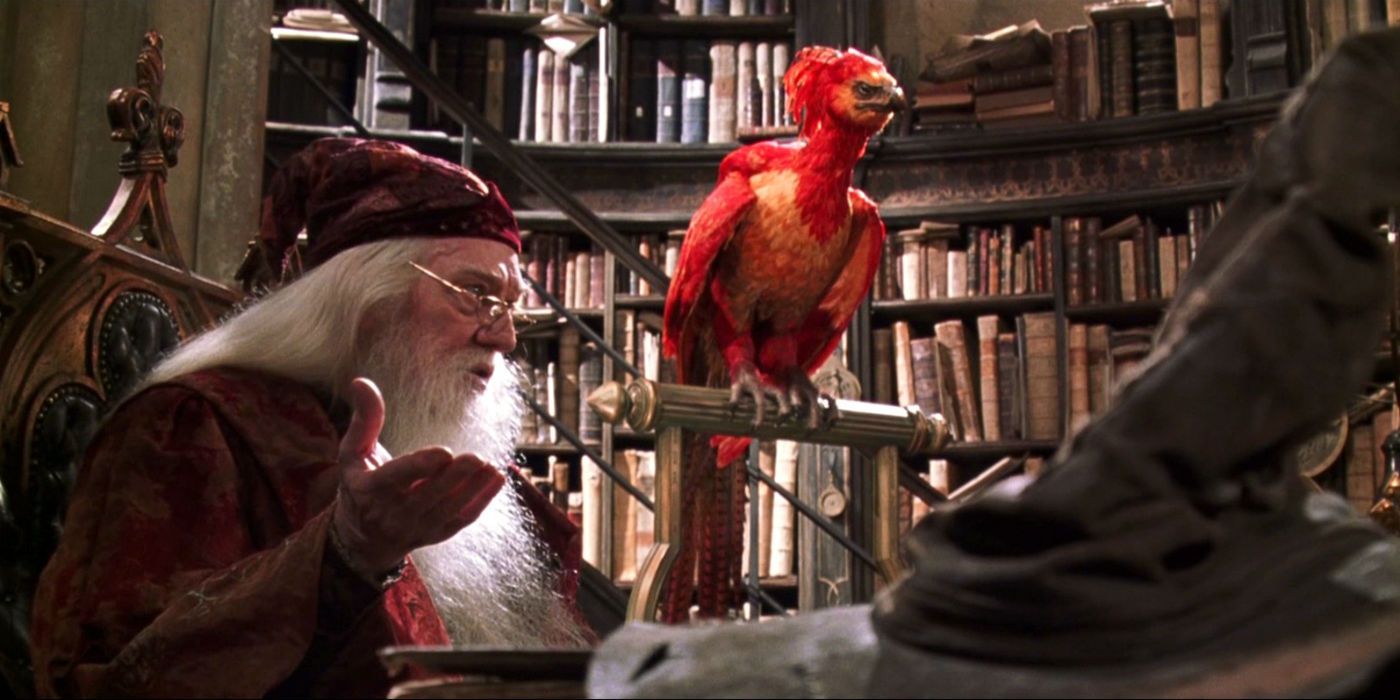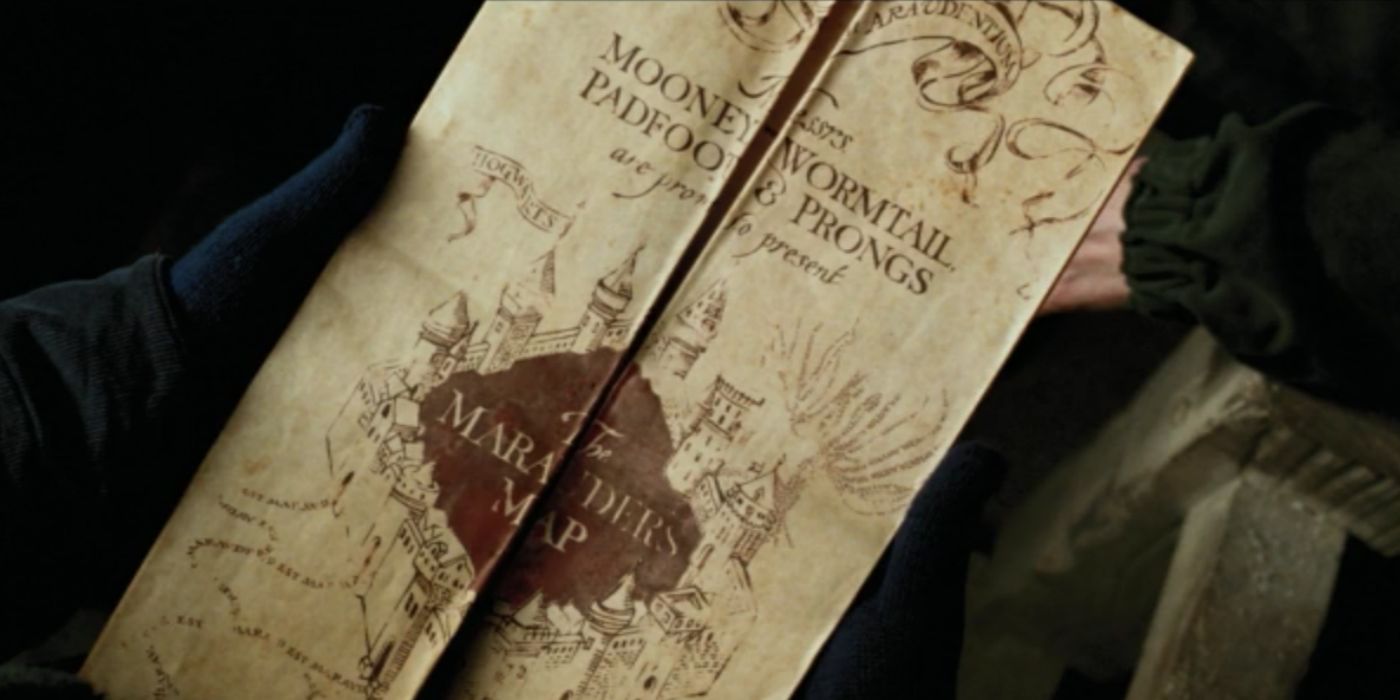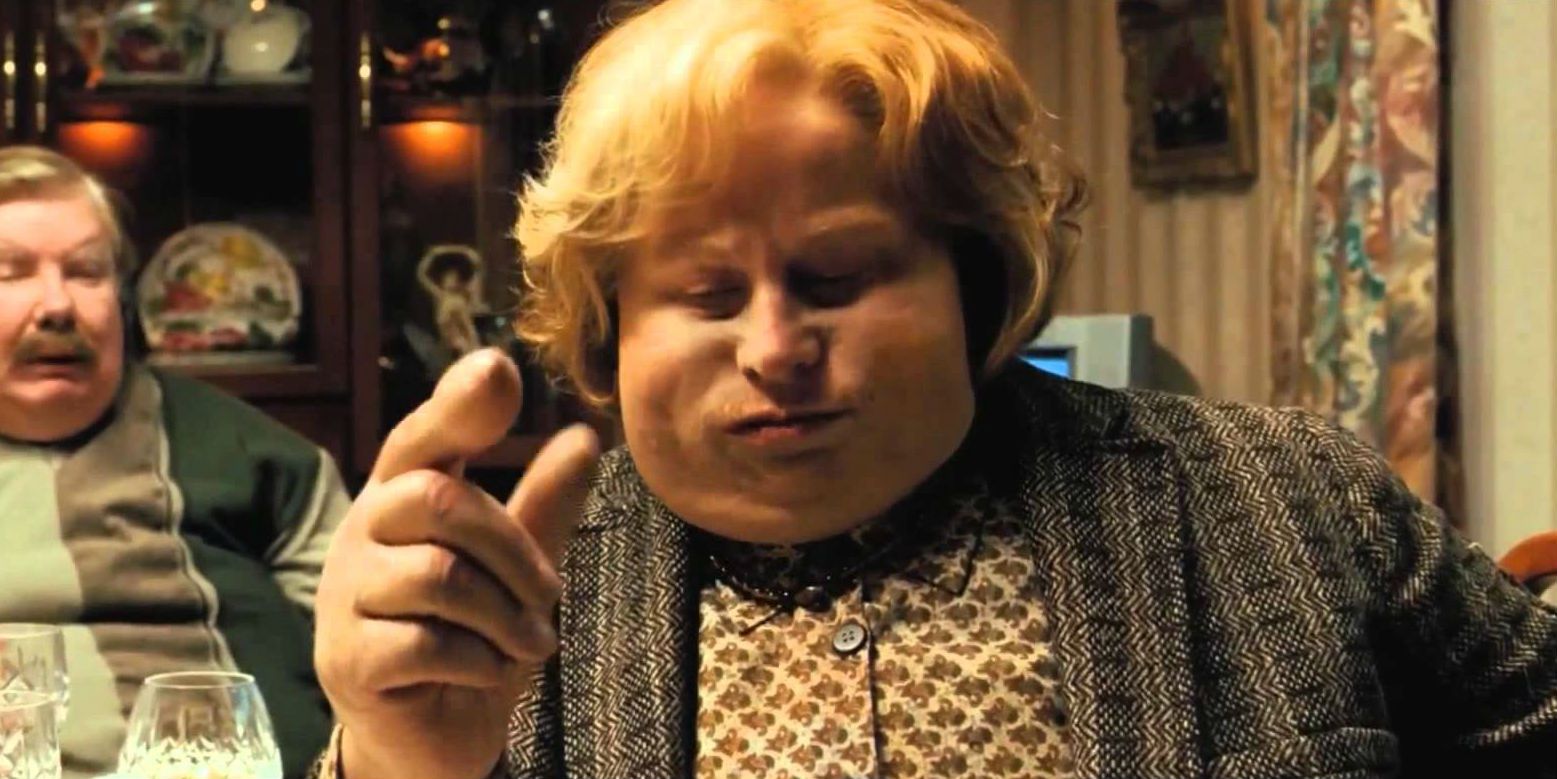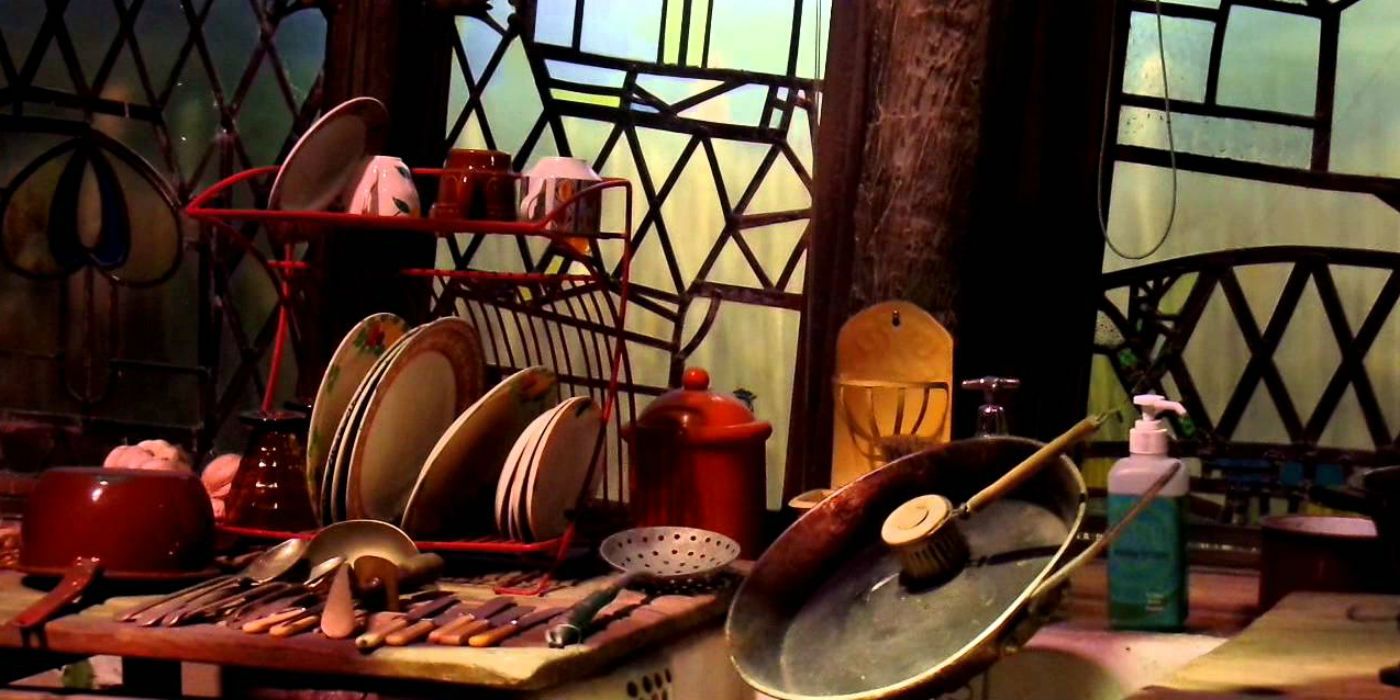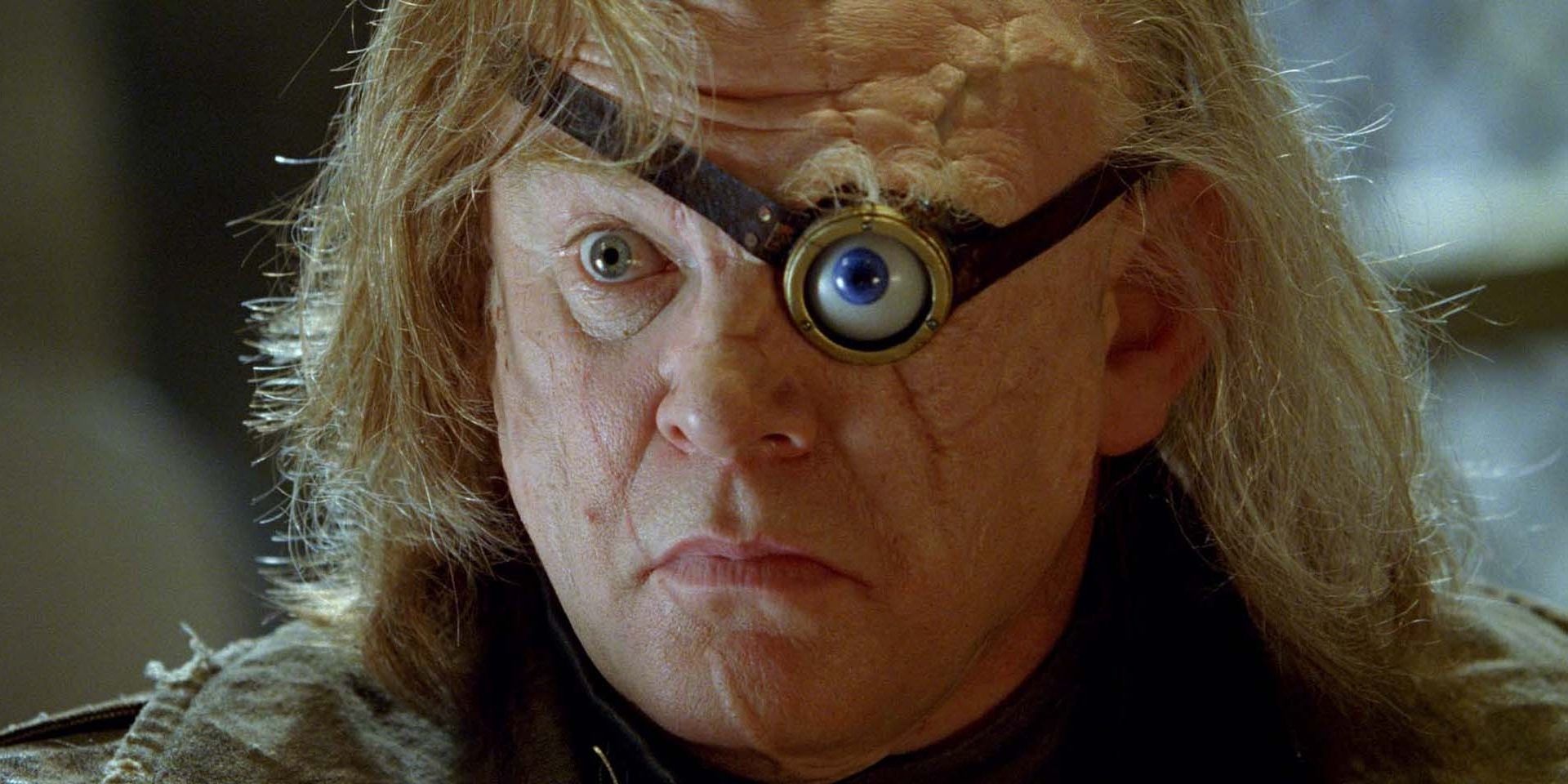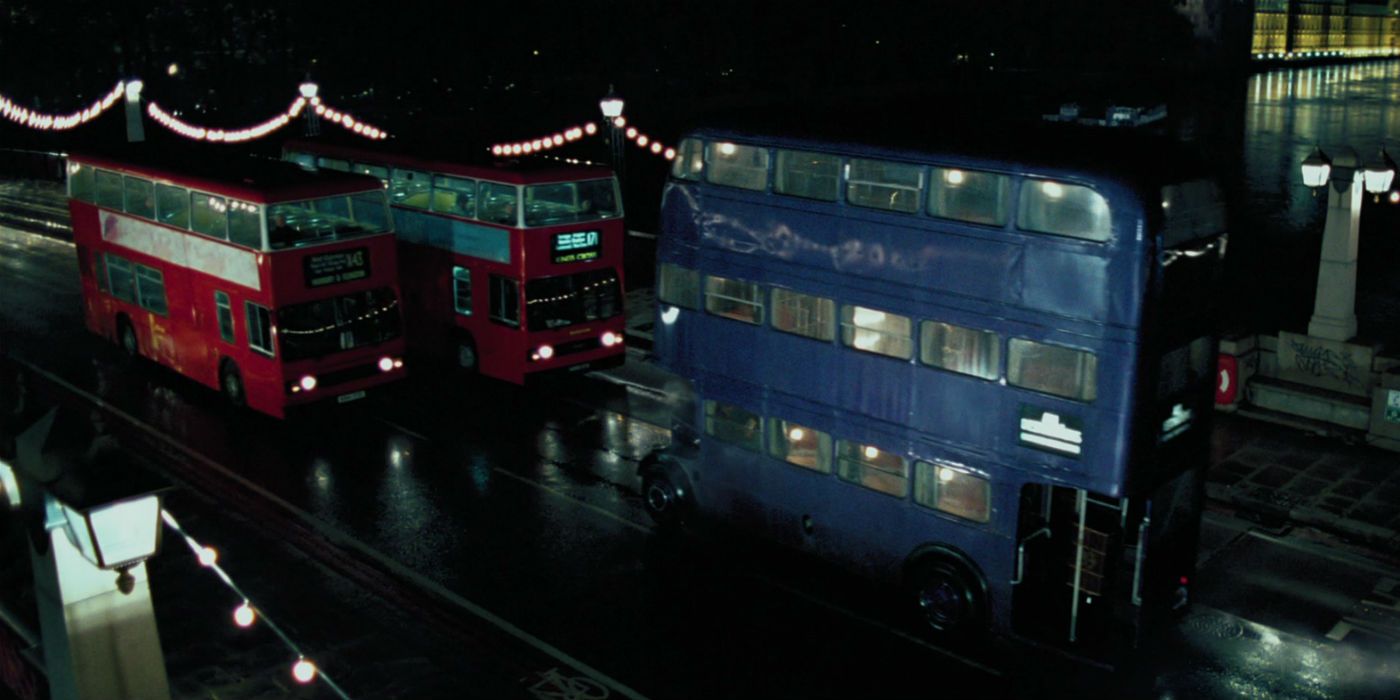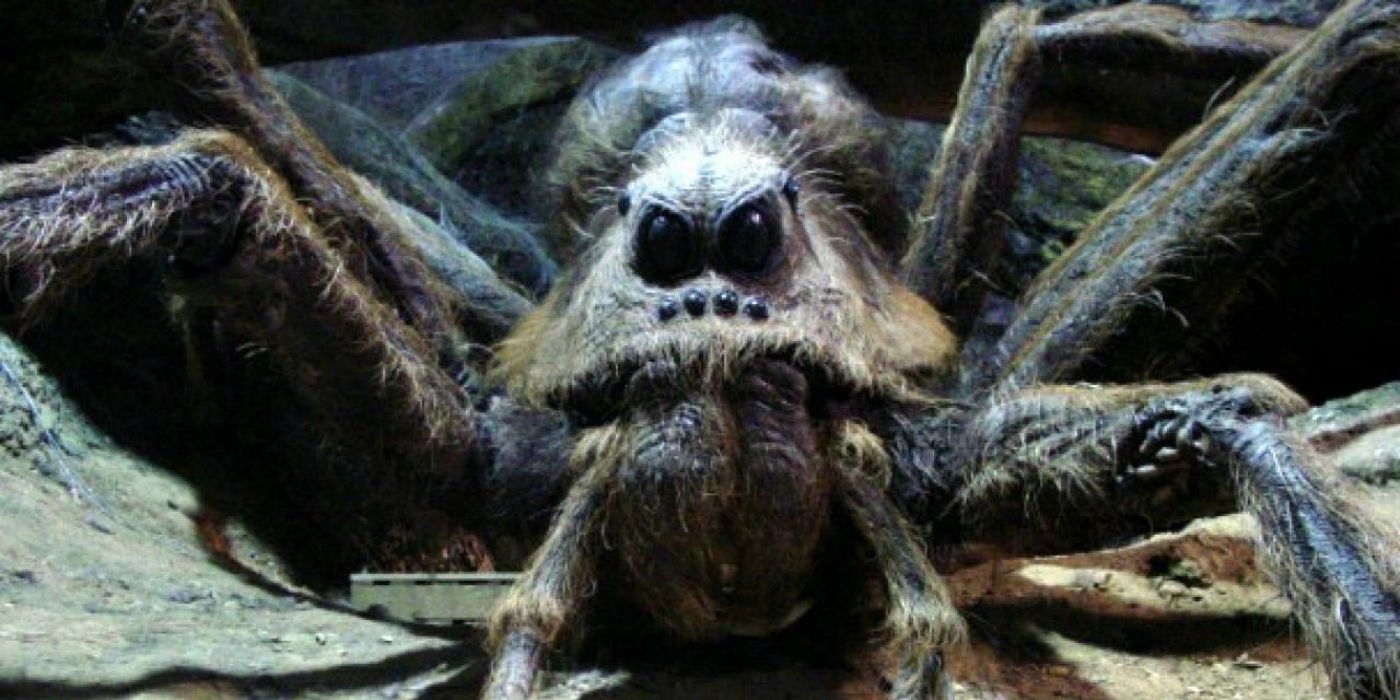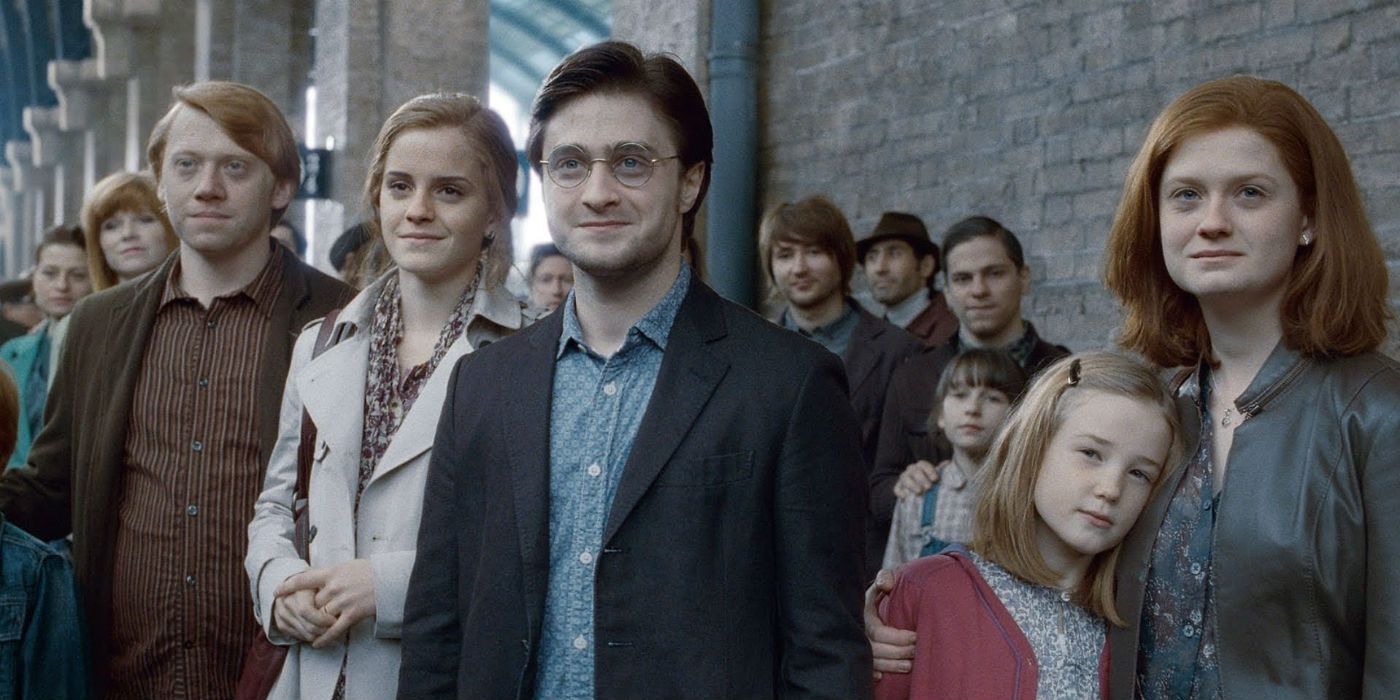Over a span of ten years, the Harry Potter films revolutionized the visual effects industry, specifically in Great Britain. With each film, the technology, creativity, and budget for effects increased, garnering multiple BAFTA and Oscar nominations -- including, a BAFTA win in 2012 for Harry Potter and the Deathly Hallows: Part 2.
However, even among all the CGI and compositing, there were a large number of special effects that were done the old fashioned way. These ‘practical effects,’ as they’re known in the industry, were necessary in order to keep budgets down. Each Harry Potter film cost between $100-250 million dollars to make and utilized hundreds of special effects in order to bring the magic to life.
That being said, with the ingenuity that the special effects teams brought to the table, it’s not always easy to tell a practical effect from a computer generated one. Sometimes, the two types of special effects were combined in order to make them seem more realistic (as was the case with many of the creatures, like Buckbeak in Harry Potter and the Prisoner of Azkaban).
Think you can tell a CGI effect from a practical effect? Here are 15 Special Effects You Thought Were CGI But Weren’t in the Harry Potter films.
15. When Harry's Wand Chooses Him
If you've been to the Wizarding World of Harry Potter, whether in Orlando, Hollywood, or Osaka, chances are you’ve witnessed a wand choosing a wizard at Ollivanders wand shop. Although much of that experience only involves a light change, some magical music, and a fan, it’s not that different from how the effect was created on screen in Harry Potter and the Sorcerer’s Stone.
When Ollivander hands Harry the wand that eventually becomes his, a number of things start to happen: light appears out of nowhere (giving him a halo), wind begins to blow, dust flies about, and candles flicker. It all happens so suddenly and everything seems to be moving at a much faster pace around him, as if the world itself is reacting to the pairing.
Slowing down the film to 120 frames per second created the illusion of time quickening, and the rest was done just like the theme park version. Skillful lighting design, some smoke, and a fan brought one of the most defining moments from the books to life at a fraction of what it would have cost if they tried to pull it off digitally.
14. Hagrid's Half-Giant Size
In the books, Hagrid is described as being “almost twice as tall as a normal man and at least five times as wide.” Translating a person of that size to the big screen, however, proved rather difficult. Rather than creating Hagrid as an entirely digital character, which would have been monumentally expensive over the course of eight films, the filmmakers decided on having two separate Hagrids.
For closeups and medium shots where he was in the frame, Robbie Coltrane, whom we’ve all come to know as Hagrid, would appear. Although Coltrane is 6’1”, to make him appear larger, his scenes would often be shot on small sets with scaled down props. For wide shots or those where the other actors needed to seem half his size, Martin Bayfield, a 6’10” former rugby player/policeman was used.
Bayfield was put into a bodysuit with prosthetic hands and a sculpted head that eventually became voice-activated. To match Coltrane’s performance, Bayfield watched a video of him lumbering around as Hagrid, and in Coltrane’s words, “learned it perfectly, to the point where people didn’t know who was who when we were at a distance…”
13. Lifesized Wizard's Chess
Remember the scene in Harry Potter and the Sorcerer’s Stone when Harry, Ron, and Hermione are faced with a life-sized version of Wizard’s Chess? While it would seem that all the pieces were created digitally and then moved around the board, in actuality, the whole game was a practical effect set.
Production designer, Stuart Craig, designed the pieces, which were then sculpted and cast by the SFX crew with materials that varied depending on their use. Pieces that were supposed to move were rigged up with radio control. “We could drive the horse forward and stop—and then move it sideways and stop very cleanly,” explained John Richardson, head of the special effects team.
Well, that’s all fine and good, but what about when the pieces battle each other and explode? Cleverly, instead of using pyrotechnics, which couldn’t be used around such young actors in that matter, compressed-air devices were used instead. So when Ron sacrifices his knight to the queen, leaving Harry to checkmate the king, his horse really does explode, although it’s done from within, not due to the impact of the queen’s sword.
12. Illuminated Wands
While the majority of wand effects and spells were done digitally, one of the simplest ones was not. There are a number of times throughout the films when characters are seen with a light shining from the tip of their wand. This wand-lighting charm, known as Lumos, acted as a flashlight of sorts in dark places.
Instead of adding that effect in post-production, certain wands were outfitted with battery packs. Whenever you see a lit wand or lantern, particularly in the Forbidden Forest, those were practical effects powered by batteries. Apparently, they were quite unwieldy and uncomfortable, according to Daniel Radcliffe. “We could barely lift our arms up after any scene in those first two films, because we’ve got wand packs on, under our robes, and they were about as big as car batteries. And it’s such a small effect,” he explained in the book, Harry Potter: Page to Screen.
11. Devil's Snare
Because its conception would have cost a boatload of cash if done digitally, the Devil’s Snare plant seen in Harry Potter and the Sorcerer’s Stone also became a practical effect. Harry, Ron, and Hermione jump down the trapdoor guarded by the three-headed dog, Fluffy, and land amidst the deadly plant. It soon proceeds to wrap them up in its gnarly, tentacle-like branches, threatening to squeeze them all to death.
To accomplish this effect on set, the Devil’s Snare was turned into a giant puppet. Its vines were wrapped around the three actors and then manipulated by puppeteers, unraveling and pulling them off behind the scenes. According to Harry Potter: Page to Screen, the film was then reversed to make it seem like the tentacles were grabbing and securing themselves around the actors instead of getting pulled off. It sounds like such a simple technique, and yet the amount of work put into its creation is astounding.
10. Close Up Shots of the Basilisk
A number of special effect scenes became a combination of both practical effects and CGI in order to make certain props and creatures more believable. One example of this half-and-half approach was the Basilisk seen in Harry Potter and the Chamber of Secrets. While the majority of the Basilisk’s flailing, snake-like movements were computer generated, when it was seen close up or Harry interacted with it, you were seeing a life-sized, animatronic creature.
Since Harry was supposed to essentially battle the Basilisk and ultimately stab it in the head, director Chris Columbus, believed Daniel Radcliffe needed something tangible to work with. While originally just the mouth was requested, an entire twenty-five-foot model was eventually created, complete with moving jaw, nostrils, eyes, and even retractable fangs.
While it may seem like overkill to create a huge head section for just a few shots, special effects head, Nick Dudman, was adamant about the benefits of using an animatronic snake in addition to CG. “A CG shot could cost $100,000, especially back then,” he explained in Harry Potter: Page to Screen. “Therefore, if it saved you one shot, and it only cost $30,000, it was worth doing.”
9. Doors to The Chamber of Secrets and Gringotts Vaults
It’s always interesting to see how the filmmakers visualize something from the books, especially props or inanimate objects. When Harry, Ron, and Gilderoy Lockhart reach the entrance of the Chamber of Secrets in the second book, two entwined snakes decorate a solid wall. Harry speaks in Parseltongue and then “the serpents parted as the wall cracked open, the halves slid smoothly out of sight…”
However, for the film adaptation of Harry Potter and the Chamber of Secrets, a giant, round metal door was created, which featured seven snakes instead of two. Once Harry tells it to open, the snakes fold in on themselves as another eighth snake moves around the circumference of the door, opening it. With a locking mechanism that impressive, it has to be CGI, right?
Wrong! Mark Bullimore, the special effects supervising engineer, manufactured the door with a real working mechanism. He was also responsible for creating the complex mechanical doors for both the Potter’s and Lestrange’s vaults at Gringotts bank. “Every lock on Bellatrix Lestrange’s vault door at Gringotts was handcrafted by the Special Effects Team,” tweeted the WB Studio Tour-London. You can actually see these doors and a number of other practical effects if you ever take a visit to the studio.
8. Fawkes the Phoenix
Another beast, which seemed like the result of animation and CGI, was Professor Dumbledore’s pet phoenix, Fawkes. Extensive research went into the creation of Fawkes using real birds, as well as mythological ones, for inspiration. Concept designer Adam Brockbank explained the look of the phoenix in Harry Potter: Page to Screen: “The size and length of Fawkes’s wings and wingspan are based on a combination of a sea eagle and a vulture. Proportionately, he’s a bit stretched, with a head that has a long, exaggerated crest, a bit like a bird-of-paradise plant.”
In fact, Fawkes appearance was so convincing, Richard Harris, who played Dumbledore in the first two films, was completely fooled by it. According to Daniel Radcliffe, “One of the most wonderful moments was him walking up to Fawkes the phoenix and thinking it was a real bird. Absolutely 100 percent believing it. And, of course, the animatronics boys are outside, and they’ve got a camera in the bird, so they can see that Richard’s chatting away to it. They start animating it, quite innocently, and then it became this thing where no wanted to say to Richard, ‘You know it’s a robot. It’s not real.’”
7. Self Folding Aspect of Marauder's Map
One of the most beloved items in the Harry Potter universe, the Marauder’s Map incorporated a myriad of effects, including some conceived from actual magic. Illusionist Paul Kieve was hired during Harry Potter and the Prisoner of Azkaban to assist in making objects appear to float in mid-air and move on their own.
Kieve created the self-folding version of the Marauder’s Map seen in Professor Lupin’s office when he is packing up his things after resigning. "In 'Harry Potter,' the director wanted a live magician because it gives him direct control," said Kieve. "When it goes into CGI he doesn't really have control.”
Indeed, director Alfonso Cuaron preferred to use practical magic effects as much as possible to give the illusion of realism. “Low tech has a certain charm,” he mused in Harry Potter: Page to Screen. “Because when you realize something was done practically instead of digitally, it makes it that much more real.”
6. Aunt Marge's Inflation
Another standout, non-digital effect from Harry Potter and the Prisoner of Azkaban, was the inflation of Dudley Dursley’s Aunt Marge. Harry performs underage magic on her after she says some very nasty things about his parents, causing her to inflate like an oversized balloon and float away. “That was the one thing in the script I’d read that I expected to be digital,” confessed special effects head, Nick Dudman.
However, due to Alfonso Cuaron's insistence that little to no CGI be used, Dudman explained in Harry Potter: Page to Screen that “There’s nothing digital in that except some cable removal. Everything you see there was done on the set in camera.” Actress Pam Ferris went through four different makeup stages and wore body suits that were pumped full of air. Even her hands and legs were able to inflate separately, creating a much more convincing transformation. She was lifted up on wires and her movement controlled by rigs that spun her around. Ferris endured hours of fittings, makeup, and rehearsals, but luckily, was “just amazing,” according to Dudman.
5. Mrs. Weasley's Domestic Tasks
In Harry Potter and the Chamber of Secrets, Fred, George, and Ron rescue Harry from the Dursley’s in their flying Ford Anglia. It’s during this film that both the audience and Harry get our first glimpse of the Weasley’s home, The Burrow.
Since Harry’s still relatively new to magic -- it’s only his second year at Hogwarts after all -- he’s awestruck by all the bits of magic he sees. One such element that probably seems pretty dull to the Weasley kids is how Mrs. Weasley has charmed various household items to self-complete their tasks. There’s a dish washing itself in the sink, a knife chopping up vegetables, and knitting needles creating one of the many handmade items Mrs. Weasley is known for.
As most of these items are both moving without assistance and floating in mid-air, it can be safely assumed that they were probably CGI. But, thanks to various press and visitor coverage of the Warner Brothers Studio Tour in London, it was revealed that those automated domestic tasks were, in fact, mechanical, practical effects.
4. Mad-Eye Moody's Eye
Animation was not used at all for Alastor ‘Mad-Eye’ Moody’s magical eye. Like most other effects on this list, his “mad-eye” was a practical effect created by the supervising animatronic designer, Chris Barton.
“We wanted something he actually made as a wizard,” explained Mad-Eye actor, Brendan Gleeson in a 2014 interview with AV Club. “So the creature effects—all that stuff and working with that eye—were ****ing fantastic. Massive respect for the craftsmanship—kind of old-fashioned, in a way. Before the CGI just about took over in number four, particularly, which is my big one. But we kept the eye in-camera. That sort of magic—that’s real magic in cinema.”
The eye was radio-controlled by the animatronics department, which moved around inside a brass holder that was magnetized. Unfortunately, the device wasn’t completely flawless and occasionally the eye would become demagnetized and pop out of its holder. Eventually, a special wig was made with separate pieces to accommodate the eye and make repairs easier.
3. The Knight Bus
All aspects of The Knight Bus’s creation were decidedly magical. To achieve the triple-decker appearance described in the books, a London double-decker bus was taken apart and reconstructed with an additional level welded on. It was also fitted with an engine powerful enough to hold and counterbalance the additional weight and height from the third level.
Although the scenes of the bus squeezing between other vehicles were obviously CGI, shots of it speeding through London were not. To create the sped-up effect, the camera department used a similar technique to the one from Harry Potter and the Sorcerer’s Stone.
As it was when Harry’s wand chose him in Ollivanders, the film was “undercranked” and advanced at a slower pace, causing everything to appear like it’s moving ultra fast when played back at the standard 24 frames-per-second rate. To enhance the bus’ haste even further, it was also shot traveling at a slightly fast speed, while everything else around it moved much more slowly.
2. Aragog
One of the most impressive special effects of all -- and certainly the top creature effect throughout the entire series -- was the giant spider, Aragog. Special makeup designer and creature supervisor, Nick Dudman, convinced the producers that he and his team could bring the eighteen-foot wide spider to life, rather than render an expensive digital creation.
Aside from the challenge that exists when creating an entire creature from scratch on that scale, Aragog was also a character who spoke and had to actually move around the set. As Dudman explains, “Each leg had to be manipulated by a different team member, and the whole contraption operated on a complex combination of aquatronics [pneumatic air rams] and a series of computers with video monitors. The entire creature weighed three-quarters of a ton!"
Luckily, all their hard work paid off, and the resulting creature was incredibly realistic despite its exaggerated size. Like his character, Ron, Rupert Grint also has a fear of spiders and was immediately terrified upon meeting Aragog. “Rupert did manage to overcome his arachnophobia,” confessed Radcliffe. “He was helped slightly by the fact that Aragog was so impressive. We couldn’t really be scared when we were thinking, ‘Wow, that’s so cool!’”
1. 19 Years Later Scene
In the epilogue of Harry Potter and the Deathly Hallows: Part 2, Harry, Ron, Hermione, Ginny, and Draco appear at Platform 9 ¾ to send their children off to Hogwarts, nineteen years after the Battle of Hogwarts takes place. There was much back and forth between the filmmakers, and even some of the cast, over how to age-up the stars for this scene.
“I think they should do it with older actors and just leave us out of the scene,” Daniel Radcliffe told the LA Times in 2009. While the filmmakers ultimately decided to age the characters using prosthetic makeup, apparently they went a little overboard in an effort to really sell it. “Rupert looked like he was about 75 years old with the triple chin and the belly, he looked like he had really lived as a lush,” producer David Heyman said.
A second go at the makeup was then shot. The extra hassle and cost “made all the difference in the world,” according to Heyman. Aside from toning down the makeup with a sprinkling of CG, the scene actually became the very last that the main cast filmed together; a fitting ending for a group of young actors that we all watched grow up before our very eyes.
--
Which of these practical effects surprised you the most? Let us know in the comments.

